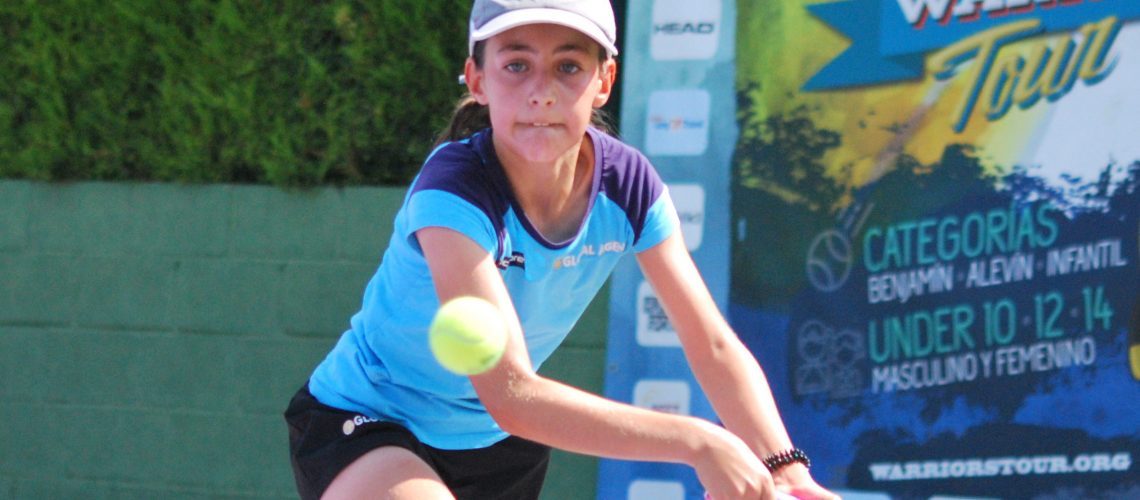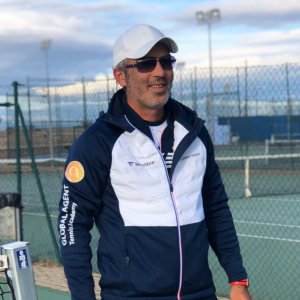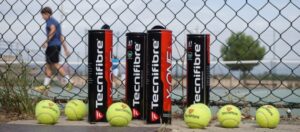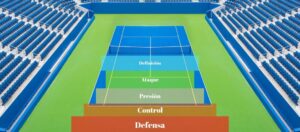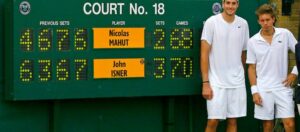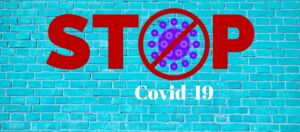In the article “Three Points of Vision“, we talked about the technical part about how one should look at the ball along its course. In this article we will look at the right mental platform from where technical work becomes more affordable. The mental aspect of the vision prepares us to be able to approach certain technical characteristics more easily and dominate by putting this section into practice.
Step by step or Point by point...
The general point-to-point idea is pretty well known on the tennis court. Its origin is to maximize the presence in the present without anticipating events. In the case of “looking at the ball” this failure manifests itself in directing your eyes to where you want to send the ball before making the shot. At that point what you just did is transfer much of your concentration to a desired future by removing it from the present that is building that future. This impairs the execution of the stroke, which then results in an ERROR.

The vocabulary defines in different ways that moment of keeping the sight (head) fixed on the point of the contact. In order to better organize ourselves throughout this article and in general, within the articles on this blog, this technical unit will be called FIXING THE CONTACT POINT.
Many players tell me: “Even if I don’t look at the ball that way, I am capable of playing and I’m not doing too badly either.” That’s true. You can play without fixing the contact point, but in the same way you can play without loading, without returning to the center, without following through the shot, without adequate steps, etc. It is possible and in fact even the pros carry a load of multiple (minor) “mistakes”, be they technical, tactical or mental… You can play with it but you can also optimize your game by working on them.
As I have said many times there are certain technical pillars that are similar for all players. They are axioms and do not change depending on the variety and the personality of different players. Fixing the contact point would be one of these pillars to achieve the excellence of the shot. Although at different levels that technical unit would also serve as a springboard for a fairly visible improvement.
Returning to the article …
One of the first causes of difficulty in its execution is the player’s desire to anticipate events and distract himself from the executing action. It is not easy to focus all concentration on the moment and keep your mind blank to accommodate the action. That is rather achievable at high piloting levels in any profession. But here we present you some keys from the point of view of the mental aspect of the vision that could facilitate the work.
As we have said in the article “Three Point of Vision“, the section of the ball’s path from your racket to the net is of less importance for vision. At this time the player ends the stroke, exits the shot and begins recovery. Because of this …

Key 1 (General)
After reacting on opponents contact point, making a loading step and transition when when it passes over the net and adapting to its trajectory, power or spins (the last thing we will talk about in another article), it is time to make contact with the ball. There you must leave your head still, with your eyes on your contact point until you finish following through the ball. Due to the speed with which the ball bounces on the strings, you will not be able to see it thoroughly. So we try to fix the contact zone and keep our head still while we finish accompanying the shot.

Key 2 (Groundstrokes)
Do not move the head while you hit the ball. The rear shoulder, when executing the rotation, will automatically pull the head out (This will not be the case of the one-handed backhand since the rotation there varies compared to the two-handed). Therefore, the movement of the head from the beginning of the shot to the end would be minimal. For this work, the rotation gesture adapted to different types and styles of players must be well placed.
Key 3 (Visualization)
Generate a complete image of the shot, from its execution to its ball placement, and not segment it. This helps to avoid having to mentally go through each section of its course and therefore the need for the player to look at where the ball is going before executing the shot.
Key 4 (Dissociation work)
Automate the dissociation of the three levels of body in rotation: feet, trunk and head. Raise awareness of the rotation in the middle part (hip) with the two end points in fixation on the head and on the feet (load). Dissociating this section would be important since the rotation usually drags the whole body in a block.
Key 5 (Mental / Psychological, Advanced Level)
This key is the most suitable for those who want to reach high levels of this sport. The work here is purely mental, encompassing any concept of action on the court other than contact fixation. We are talking about a player who is able to maintain maximum concentration at the moment of the action without rambling mentally in the future. This work is very long-term, based on placing professional values in each section of the disciple’s experiences on the court and in life. (More info on the subject with their respective processes we will expose throughout future articles).

Both in the shots, as in the matches or training in general, raising awareness of the present increases effectiveness and performance. The advancement of this aspect and your awareness takes many hours of involvement and work on and off the court. But it is worth it as you will gain its fruits in your future development.
Simplifying everything that has been said about the mental aspect of vision, a player must be aware that the only point where he can influence the quality and effectiveness of the shot is at the moment of the contact. Once the ball is in the air the player is already unable to change its direction or characteristic. Therefore, all the influence that the tennis player can apply to the shot is in those milli-seconds when the ball touches the strings of his racket and the rest is only the fruit of this work. Once this idea is accepted, it will be much easier for the player to dedicate more of his concentration to this gesture and continue improving his game.




